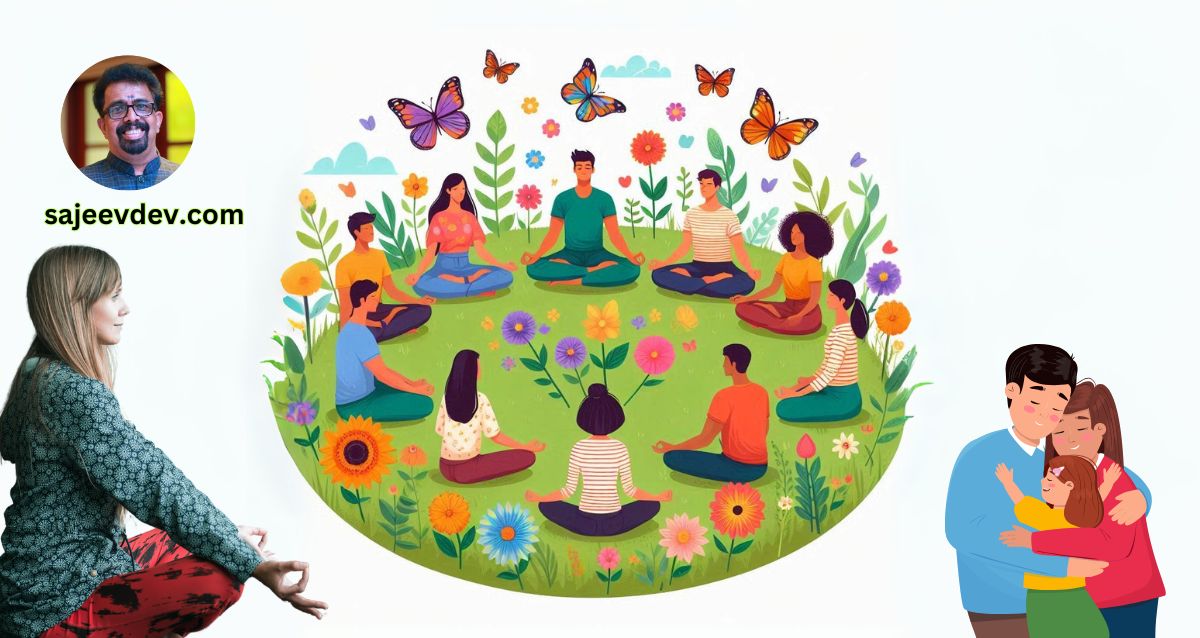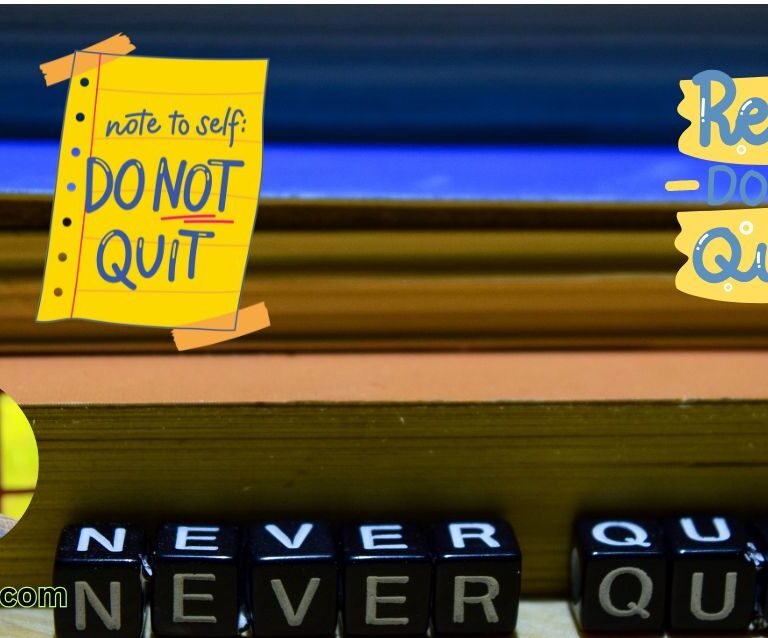Mindfulness
Mindfulness, a term that has gained significant traction in recent years, refers to the practice of maintaining a moment-by-moment awareness of our thoughts, feelings, bodily sensations, and surrounding environment. The roots of mindfulness can be traced back to ancient contemplative practices, most notably in Buddhist traditions, where it serves as a core principle in the cultivation of insight and enlightenment. Over time, mindfulness has transcended its spiritual origins and has been embraced widely in modern psychology and wellness practices.
At its essence, mindfulness is about being fully present and engaged in the current moment, free from judgment and distraction. This means observing our experiences without letting our preconceived notions or biases influence our perception. The fundamental principles of mindfulness center around awareness, acceptance, and non-reactivity. By cultivating these principles, individuals can develop a deeper understanding of their thoughts and emotions, leading to improved mental clarity and emotional resilience.
In our fast-paced, technology-driven society, distractions are rampant. Constant notifications, information overload, and an always-connected lifestyle can lead to a fragmented experience of life, often causing stress and anxiety. This is where mindfulness becomes particularly relevant. By integrating mindfulness into daily routines, individuals can reclaim their ability to focus and engage with their immediate experiences. Whether through meditation, mindful breathing, or simply taking a moment to observe one’s surroundings, incorporating mindfulness practice can help enhance overall well-being.
Furthermore, research has shown that practicing mindfulness can provide a wealth of benefits, including reduced stress, improved concentration, and greater emotional balance. As more people recognize the necessity of slowing down and becoming more present, mindfulness emerges as a powerful tool in navigating modern life’s complexities, allowing one to live fully in each moment.
The Science Behind Mindfulness
Mindfulness, a practice rooted in ancient meditation techniques, has garnered significant attention in contemporary psychological and neuroscientific research. Numerous studies have demonstrated its beneficial effects on mental health, particularly in enhancing focus, alleviating stress, and improving emotional regulation. Mindfulness involves maintaining a moment-to-moment awareness of our thoughts, feelings, and surroundings, allowing individuals to cultivate a non-judgmental acceptance of their experiences.
One of the pivotal benefits of mindfulness is its ability to reduce stress. Research conducted by neuroscientists at Harvard University revealed that participants who engaged in mindfulness meditation exhibited lower levels of the stress hormone cortisol. By fostering a sense of presence and tranquility, mindfulness reduces the physiological response to stressors, potentially leading to improved overall well-being. Furthermore, consistent mindfulness practice has been linked to heightened emotional regulation, allowing individuals to respond to challenging situations with greater composure and resilience.
In addition to psychological advantages, neurobiological findings shed light on how mindfulness impacts brain functioning. Advanced neuroimaging studies have shown that mindfulness practices can modify the structure and function of specific brain regions associated with emotion regulation, such as the prefrontal cortex and amygdala. Mindfulness training has been associated with increased grey matter density in the hippocampus, a region crucial for memory and learning, indicating potential enhancements in cognitive performance as well.
Moreover, evidence suggests that regular engagement in mindfulness practices can lead to changes in brain connectivity patterns. These alterations promote a more integrated brain function, which appears to support mental health and adaptive coping mechanisms. By embracing mindfulness, individuals not only mitigate stress and anxiety but also enhance their cognitive faculties and emotional resilience, underscoring the profound impact of being fully present in each moment.
Mindfulness Techniques to Practice Daily
Integrating mindfulness into daily routines can significantly enhance the quality of life. One effective technique is mindful breathing, where individuals focus their attention on their breath. To practice, find a comfortable seated position. Close your eyes and take a deep breath in through your nose, allowing your abdomen to expand. Hold for a moment before exhaling slowly through your mouth. Repeat this process for five minutes, concentrating solely on the sensation of the breath entering and leaving your body. Should distractions arise, gently acknowledge them and return your focus to your breathing.
Another valuable method is the body scan technique. This practice involves a systematic exploration of the entire body, promoting awareness of physical sensations. Begin by lying down in a quiet space. Close your eyes and take a few deep breaths to relax. Start with your toes, consciously noticing any tension or discomfort, then gradually move your focus upwards through your feet, legs, abdomen, chest, arms, and finally, your head. Spend a few moments on each body part, allowing any tension to release with each breath. Aim to perform this scan for 10 to 20 minutes daily.
Lastly, incorporating daily meditation can greatly enrich mindfulness practice. To start, choose a quiet spot and sit comfortably. Set a timer for five to ten minutes. With your eyes closed, focus your attention on your breath, repeating a calming phrase or mantra if it helps maintain focus. When thoughts begin to wander, acknowledge them without judgment and return your attention to the breath. Regular practice can deepen one’s understanding of mindfulness, making it easier to navigate daily challenges with calmness and clarity.
Mindfulness in Everyday Activities
Incorporating mindfulness into daily tasks is a powerful way to enhance our experiences and deepen our connection to the present moment. Mindfulness, the practice of maintaining a moment-by-moment awareness of our thoughts, feelings, and surroundings, can be seamlessly applied to ordinary activities such as walking, eating, and even household chores. By embracing mindfulness, we transform mundane moments into opportunities for reflection and appreciation.
Walking is one of the simplest yet most effective activities to practice mindfulness. Instead of rushing from one location to another, try to focus on the sensations of each step. Feel the ground beneath your feet, notice the rhythm of your breath, and become aware of the sights, sounds, and scents in your environment. This heightened awareness can turn a routine commute into a rich experience, engaging your senses and grounding your thoughts.
Similarly, meal times provide an excellent opportunity to practice mindfulness. Often, we eat hurriedly or while distracted by screens. Instead, take a moment before you eat to appreciate the colors, textures, and aromas of your food. During the meal, chew slowly and savor each bite. Pay attention to the flavors and how they change with each mouthful. This practice not only promotes a healthier relationship with food but also encourages gratitude for the nourishment it provides.
Even household chores can become mindful activities. When washing dishes, focus on the warmth of the water and the sensation of the soap on your hands. Notice the sounds of the utensils clinking against each other and the visual cleanliness that comes from your efforts. By cultivating awareness during these tasks, they can evolve from obligatory chores into moments of peace and reflection, enhancing overall well-being.
Integrating mindfulness into everyday activities can significantly enrich our daily lives, allowing us to appreciate the present and fostering a sense of fulfillment.
Overcoming Challenges in Mindfulness Practice
Practicing mindfulness can be a fulfilling experience, yet individuals often encounter various challenges that hinder their progress. Common obstacles include a wandering mind, hectic schedules, and the difficulty of remaining present in the moment. These issues can lead to frustration and potentially discourage practitioners from continuing their mindfulness journey.
One of the primary challenges is a wandering mind. In our fast-paced world, it is natural for thoughts to drift towards past events or future anxieties. To counteract this tendency, individuals can use techniques such as focusing on their breath or engaging in body scans. These exercises help anchor attention and foster a stronger connection to the present moment. Additionally, it can be beneficial to remind oneself that a wandering mind is a normal part of the practice; acknowledging and gently redirecting thoughts without self-judgment can enhance mindfulness.
Busy schedules also present significant hurdles to consistent mindfulness practice. With numerous commitments demanding attention, dedicating time for mindfulness can feel daunting. To address this, individuals are encouraged to integrate mindfulness into daily routines. Short practices, such as mindful walking or focused breathing during brief breaks, can be effective. These moments of awareness can be seamlessly woven into one’s day, promoting mindfulness without the need for extensive time blocks.
Finally, remaining present in the moment can be a struggle, especially in environments filled with distractions. Creating a dedicated space for mindfulness can cultivate an atmosphere conducive to practice. Moreover, setting realistic expectations for oneself can help in maintaining motivation. Acknowledging that building mindfulness is a gradual process allows practitioners to approach their journey with patience and persistence.
By recognizing these challenges and employing effective strategies, individuals can deepen their commitment to mindfulness and enrich their experiences in the present moment.
Mindfulness and Emotional Well-being
Mindfulness, defined as the intentional focus on the present moment without judgment, holds significant promise for enhancing emotional health. This practice encourages individuals to develop a deeper awareness of their emotions, which in turn allows for better management of feelings such as anxiety, depression, and stress. By cultivating mindfulness, individuals can gain insight into their emotional states, facilitating a clearer understanding of their triggers and responses.
Research indicates that engaging in mindfulness practices can lead to a reduction in symptoms associated with anxiety and depression. For instance, mindfulness meditation, often combined with breathing exercises, allows individuals to observe their thoughts and feelings without becoming overwhelmed by them. This non-reactive approach to emotions encourages a sense of calm and stability, ultimately fostering resilience against emotional distress.
Furthermore, mindfulness enhances emotional regulation by promoting a greater awareness of bodily sensations and emotional cues. This awareness can lead to a proactive instead of a reactive approach to emotional experiences. For example, individuals practicing mindfulness can recognize the early signs of emotional discomfort, such as increased heart rate or tension, and implement coping strategies before the emotions escalate. Techniques such as body scanning or journaling feelings can also offer valuable insights into emotional patterns, enabling individuals to reframe negative thoughts and develop healthier responses.
In addition to personal insight, mindfulness can strengthen social connections, which are vital for emotional well-being. Being present during interactions allows for more meaningful relationships and empathetic exchanges. Practicing mindfulness within relationships can result in increased emotional support from friends and family, further enhancing resilience against stressors. Overall, the integration of mindfulness into daily life offers an accessible pathway to greater emotional awareness and health.
Mindfulness and Focus: How it Enhances Productivity
Mindfulness, defined as the practice of maintaining a moment-by-moment awareness of our thoughts, feelings, and surroundings, is steadily gaining recognition for its substantial impact on productivity. In today’s fast-paced world, where distractions abound, employing mindfulness techniques can significantly enhance one’s ability to concentrate and make informed decisions. Numerous studies illuminate the correlation between mindfulness practices and improved productivity in both professional and personal contexts.
Research indicates that individuals who engage in mindfulness exercises experience heightened focus, which enables them to complete tasks more efficiently. For instance, a study conducted by the Harvard Business School found that participants who practiced mindfulness meditation exhibited greater attentional control compared to those who did not. This enhanced focus aids in reducing the time taken to complete projects and diminishes the likelihood of errors. By eliminating distractions and fostering a clearer mindset, mindfulness allows individuals to devote their full attention to the task at hand.
Practical examples further exemplify the benefits of mindful focus. A significant instance comes from the corporate sector, where organizations such as Google and Intel have implemented mindfulness training programs for their employees. Feedback from participants reveals that these initiatives not only enhance concentration but also lead to improved decision-making capabilities. Employees report feeling more empowered and less overwhelmed when faced with complex tasks, which ultimately translates into increased productivity.
Moreover, mindfulness cultivates a state of awareness that allows individuals to recognize when their focus dwindles and take proactive steps to reclaim it. Whether through short meditation breaks or simple breathing exercises, these practices promote a sustained level of productivity that extends beyond mere task execution. By embracing mindfulness, individuals are better equipped to navigate their responsibilities while enjoying a deeper sense of engagement and fulfillment in their work.
Creating a Mindful Environment
Creating a mindful environment is essential for fostering mindfulness practice in everyday life. A conducive physical and mental space can significantly enhance one’s ability to engage fully in the present moment. To start, decluttering your surroundings is paramount. A tidy space can reduce distractions and promote a sense of calm. Consider organizing your living or working area by removing items that no longer serve a purpose or spark joy. This process not only organizes your physical space but also clears your mind, allowing for a more focused practice.
In addition to decluttering, establishing a dedicated mindfulness corner can be incredibly beneficial. This area can be a cozy nook in your home or a serene spot in your garden, designated solely for mindfulness practices like meditation or deep breathing. Furnish this space with comfortable seating, soft cushions, or a yoga mat to create a welcoming atmosphere. Adding personal touches like inspirational quotes, meaningful objects, or images can further enhance your connection to this space, making it a personal sanctuary that invites tranquility and reflection.
Utilizing calming elements in your environment can also contribute to the overall ambiance conducive to mindfulness. Incorporate elements such as plants, which not only purify the air but also bring a sense of nature indoors. The presence of natural elements has a soothing effect and encourages a connection to the world around you. Additionally, consider the use of soft, warm lighting, which can create a relaxed atmosphere, as opposed to harsh, bright lights that may induce stress.
Finally, remember that sound can significantly impact mindfulness. Soft instrumental music or nature sounds can promote relaxation and enhance focus during your mindfulness practices. By curating your physical environment with care and intention, you create a space that nurtures mindfulness, allowing you to live more fully in each moment.
The Journey of Mindfulness
In recent discussions on mindfulness, key aspects have emerged, highlighting the transformative nature of living fully in each moment. By engaging in mindfulness practices such as meditation, breath awareness, and mindful movement, individuals can cultivate a greater sense of connection to the present, fostering emotional resilience and mental clarity. These practices provide a pathway for self-reflection and personal growth, enabling individuals to navigate the complexities of life with enhanced awareness and compassion.
It is essential to recognize that mindfulness is a journey rather than a finite goal. As individuals embark on this journey, they may encounter various challenges and moments of resistance. However, these experiences are an integral part of the process, providing valuable learning opportunities. Embracing mindfulness means accepting oneself, including the imperfections and struggles that arise. Practitioners are encouraged to approach their journeys with self-compassion, allowing for personal growth without the pressure of achieving perfection.
Moreover, integrating mindfulness into daily life requires intentionality and practice. Individuals may start by incorporating simple mindfulness exercises into their routines, such as mindful eating or observing nature during a walk. Over time, these practices can become deeply rooted habits, contributing to an overall sense of well-being and fulfillment. Reflection on one’s experiences with mindfulness can further enrich this practice, inviting individuals to notice how they respond to various situations and emotions with increased awareness.
As one continues to explore and deepen their mindfulness practice, it is beneficial to share insights with others, creating a supportive community that fosters growth and understanding. Mindfulness can be a powerful tool for not only personal transformation but also collective healing. By viewing mindfulness as an ongoing journey, individuals can cultivate a meaningful practice that continually nurtures awareness, compassion, and connection to themselves and the world around them.









